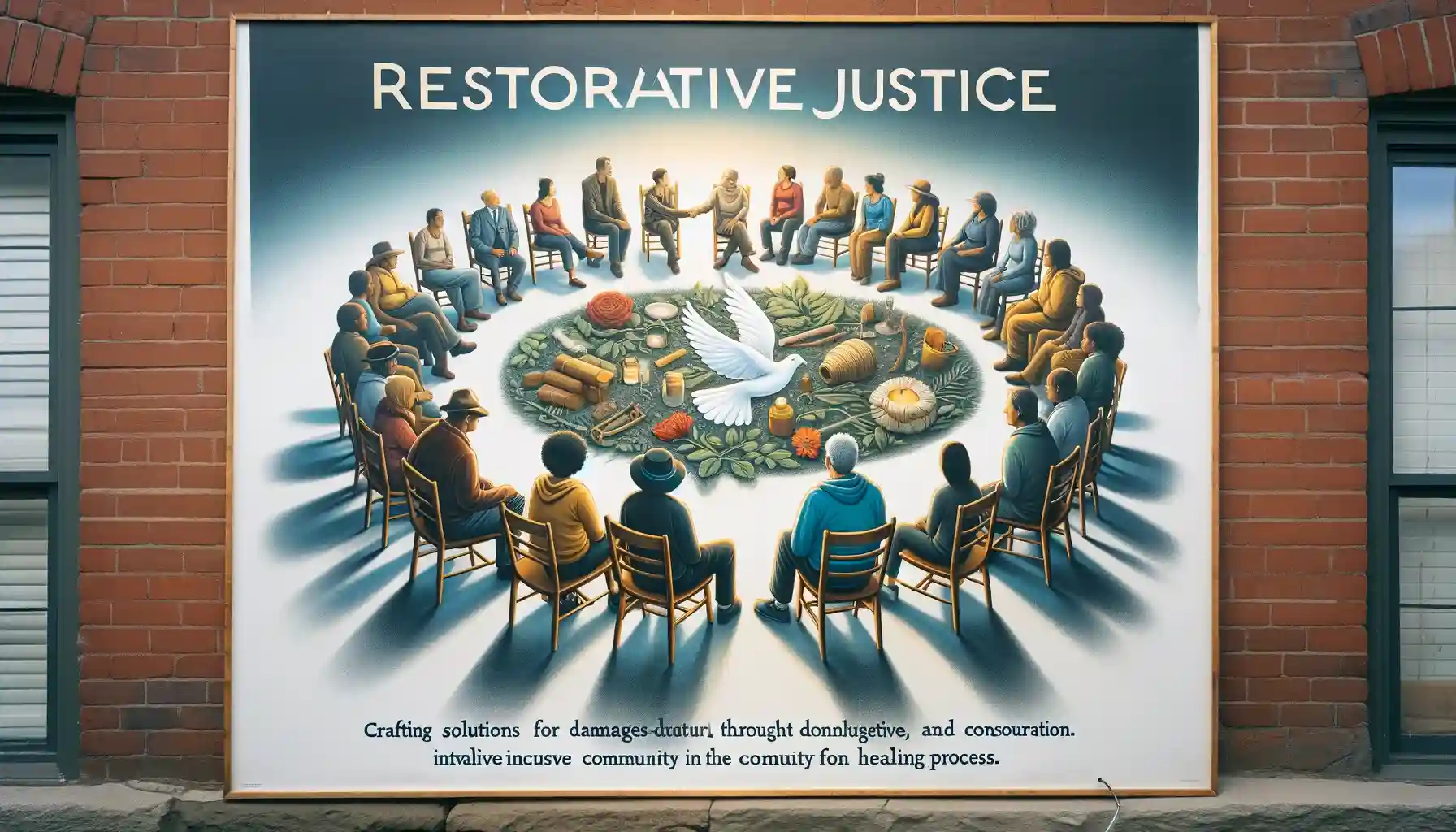Restorative Justice: Crafting Solutions for Damages
Restorative justice is an alternative approach to crime and conflict resolution that focuses on healing, accountability, and rebuilding relationships. Rather than relying solely on punishment, restorative justice seeks to address the harm caused by crimes and conflicts by involving all affected parties in the process of finding solutions. By emphasizing dialogue, empathy, and understanding, this approach aims to create a more just and compassionate society. In this blog post, we will explore the principles and benefits of restorative justice and its applications in various contexts.
Understanding Restorative Justice
Restorative justice takes a holistic view of crime and conflict, recognizing that they harm individuals, relationships, and communities. Instead of simply punishing offenders, it seeks to repair the harm caused and promote meaningful change. The process typically involves bringing together the victim, offender, and community members to engage in open dialogue facilitated by trained mediators or facilitators.
Through this dialogue, the affected parties can express their feelings, share their experiences, and discuss the impact of the harm caused. This open and inclusive conversation allows for a deeper understanding of the underlying issues and helps all participants develop empathy and compassion for one another.
Crafting Solutions Together
Restorative justice focuses on finding solutions that meet the needs of all involved parties. This may include restitution, where the offender takes responsibility for the harm caused and works towards repairing it. It can also involve creating opportunities for the victim to express their needs and have those needs addressed through community support or services.
In addition to repairing harm, restorative justice aims to prevent future offenses by addressing the root causes of crime and conflict. By involving the community in the resolution process, it fosters a sense of collective responsibility and accountability. This approach acknowledges that healing and transformation can occur when individuals acknowledge the harm they have caused and work towards making amends.
Applications of Restorative Justice
Restorative justice is applicable in a wide range of contexts, including the criminal justice system, schools, workplaces, and even families. In the criminal justice system, it offers an alternative to traditional punitive measures, allowing offenders to understand the consequences of their actions and make meaningful changes. It provides victims with an opportunity to be heard, receive support, and participate in the resolution process.
In educational settings, restorative justice can be used to address conflicts between students, promote understanding, and create a safe and inclusive environment. By involving students in dialogue and problem-solving, it fosters a sense of responsibility and empowers them to take ownership of their actions.
In the workplace, restorative justice can help resolve disputes between employees, repair relationships, and contribute to a healthier work environment. By prioritizing communication, collaboration, and understanding, it can lead to increased job satisfaction and productivity.
Restorative Justice and Personal Injury Law
In the sphere of personal injury law, the principles of restorative justice can play a pivotal role, particularly in Tulsa, Oklahoma. Personal injury lawyers in Tulsa, OK, strive for more than just monetary compensation for their clients. They understand that injuries not only affect the victims physically but also emotionally and psychologically.
By incorporating the principles of restorative justice, these lawyers help their clients express their feelings, share their experiences, and discuss the impact of the harm caused. Through this process, clients are not only able to seek the compensation they are entitled to but also find closure, healing, and a sense of justice. This approach also allows those responsible for the injuries to understand the depth of harm caused, fostering accountability and encouraging safer practices in the future.
The Benefits of Restorative Justice
Restorative justice offers numerous benefits for all involved parties. For victims, it provides an opportunity to share their experiences, be heard, and receive emotional support. It allows them to regain a sense of control and empowerment by actively participating in the resolution process.
For offenders, restorative justice offers a chance to take responsibility for their actions, make amends, and reintegrate into the community. This approach promotes personal growth and accountability, reducing the likelihood of reoffending.
Restorative justice also benefits communities by promoting healing, reconciliation, and social cohesion. By addressing the root causes of crime and conflict, it helps build stronger, more resilient communities that prioritize empathy, understanding, and justice.
Restorative justice offers a transformative approach to addressing crime and conflict, emphasizing healing, accountability, and relationship-building. By involving all affected parties in the resolution process, it fosters empathy, understanding, and empowerment. This approach has shown promising results in various contexts, offering a path towards a more just and compassionate society. Embracing restorative justice can help us craft solutions for damages that go beyond punishment, creating opportunities for healing, growth, and reconciliation.

Shahid Maqsood is an experienced writer and journalist with 10+ years in the industry. He is Content writer and Editor , where he writes daily articles covering topics like books, business, news, sports, and more. Shahid holds an MBA from Virtual University of Pakistan and a Master’s in Mass Communications. He is based in Faisalabad, Pakistan.
His work spans multiple platforms like dosttrusty.com and newsbreak.com,Quellpress.com , airriflehunting, and bruitly.com showcasing his versatility and depth. Shahid’s insightful articles reflect his expertise, authoritativeness, and trustworthiness, making him a respected and reliable voice in digital content creation. His contributions engage and inform readers, embodying professionalism and passion in every piece.







